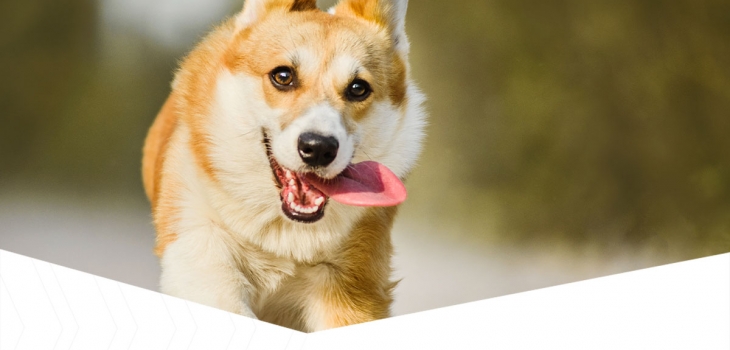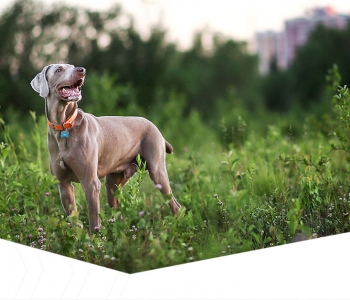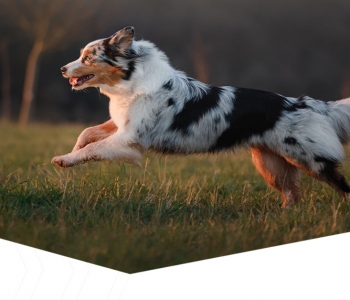
Nutrition to maximise health before and during gestation
The goal of most breeders includes three priorities: 1) improve the breed, 2) optimise conception and 3) promote the health of the offspring while preserving the health of the bitch. Appropriate feeding will increase the likelihood of this, whereas improper or inadequate nutrition can negatively affect reproduction in bitches. It’s this simple, and here we take a look at guidelines for healthy feeding before and during gestation.
Optimal nutrition for reproducing dogs should precede mating and conception, and continue right throughout gestation and lactation, but because there are so many conflicting recommendations in the public domain, this is where it gets a bit confusing. It is well accepted that nutrition is one of the most important management decisions faced by the breeder. In particular, questions such as: “Do I need to change the food?”, “What should I feed?” and “How much should I feed her?” are critical questions that many breeders ask. While there are numerous “sufficient” commercially available diets as well as home recipes available for reproduction, feeding these sufficient diets may mean the bitch is able to reproduce, but only to within expected levels. Unfortunately, these expected levels can be below the level the bitch is actually capable of. Before we take a closer look at what and when to feed your dogs, a critical point to remember is that all nutrients for the developing puppies are provided via the bitch, and these will ultimately be obtained through her diet or from her body tissues, so what we feed her must be of the highest quality.
WHAT SHOULD I FEED BEFORE CONCEPTION?:
The golden rule is to ensure the bitch is in peak physical fitness and good body condition prior to mating. Only healthy dogs in a good nutritional state with a body condition score of 3/5 (1= thin, 2= underweight, 3= ideal, 4 = overweight, 5 = obese) should be used for breeding, as effects of malnutrition before breeding are very real but are often unnoticed until the puppies are born.
Overweight bitches are at increased risk of a lower ovulation rate, smaller litter size and insufficient milk production, plus obesity can also cause prolonged interoestrous intervals and complications at birth. This means that in order to optimise fertility an overweight bitch should lose weight before breeding. The basic messages here – 1) do not breed with an overweight bitch; let her lose the weight before mating. 2) Don’t immediately begin feeding a higher energy dense diet recommended for pregnancy before conception, especially if the bitch is prone to weight gain. This could lead to dystocia, (difficulty giving birth), prolonged labour and avoidable excess cost.
At the opposite end of the spectrum, bitches consuming inadequate nutrients, and therefore being underweight, are also at increased rise of experiencing complications. Fertilised eggs may die at an early stage resulting in embryo loss, while malnutrition in pregnancy can cause low birth weight, puppies which are particularly prone to hypoglycaemia, a reduced survival rate and low birth weight.
As mentioned earlier, prior to mating there is no one diet which fits all scenarios, only healthy dogs in optimal health body condition should be mated. This means feeding a high quality diet to achieve this. For example; if the dog is overweight then prior to mating a reduced calorie diet such as Eukanuba Veterinary Diet Restricted Calorie should be fed. If, prior to mating she is underweight we recommend an energy dense diet such as Eukanuba Adult Performance, as this will help feed her to condition. Once she has reached her optimal body condition, is in perfect physical fitness and a shining example of health, then feed a high quality adult maintenance diet to suit her breed size, such as Eukanuba Adult Maintenance.
SO, WHAT TO FEED AFTER CONCEPTION?:
Contrary to popular belief, the bitch should not receive a greater amount of food immediately after she has been bred. Only 2% of foetal mass is developed by 35 days of pregnancy and just 5.5% at day 40. Therefore during the first 2/3 of pregnancy energy requirements are no different from what they were when she was in optimal body condition prior to mating. Obviously no weight loss should occur now, but it is important not to begin feeding extra calories from day 1 of pregnancy as this is highly likely to only cause weight gain and possible dystocia.
NUTRITION DURING LATER STAGES OF GESTATION:
After day 40 foetal tissues grow exponentially which means now is the time to gradually change the bitch’s diet. Choosing a high quality diet such as Eukanuba Adult Performance will optimally support gestation and lactation in the bitch. To help avoid the risk of the bitch refusing to eat the new diet introduce the new diet gradually over a 5 day period. (Day 1 & 2 = 75% of old food/25% new food. Day 3 = 50% old/50% new. Day 4 = 25% old/75% new. Day 5 = 100% new food).
For decades many companies and breeders have simply suggested that feeding a puppy formula is sufficient for reproduction, but “sufficient” should not be the goal. Based on Eukanuba research, from approximately week 5 (day 40-42) days of gestation the reproducing bitch is best fed as a working dog, meaning she will be healthier if fed on a high protein, high fat, energy dense, highly digestible, “Performance Formula.”
Eukanuba Adult Performance Formula allows the breeder to increase the supply of essential amino acids and essential fatty acids during early gestation without having to feed huge volumes of food. Energy needs increase markedly from week 5 and peak between weeks 6-8. More than 75% of weight, and at least half of foetal length is gained between the fortieth and fifty-fifty day of gestation. Although optimal nutrition is important throughout the entire reproductive process, it is especially critical in the last few weeks of gestation to ensure optimal foetal growth and development. After the 5th week of pregnancy a general rule is to gradually increase the bitch’s food intake so by the time of whelping her daily intake should be 25-50% higher than normal maintenance levels. The larger the breed and litter size the larger the increase. A note to remember – the bitch’s weight should increase by approximately 15-25% by the time she is whelping.
Although energy needs are highest around 6-8 weeks of pregnancy, food intake is limited by abdominal enlargement! We humans generally only experience the delight of one baby in uterus; imagine what it would feel like to carry 8 or 9! With this in mind it makes even more sense to provide a diet which is high in energy density to provide enough energy without the need to feed huge quantities of food, particularly in large/giant breeds. And while we are talking about the larger breeds, please note that a large breed puppy diet should be avoided as it will not provide the bitch with enough calories, she will almost certainly lose weight on this diet. This is because good quality large breed puppy foods are designed to control growth in young large/giant breed puppies and so are lower in energy. A pregnant large/giant breed will need to eat massive quantities of this lower energy dense puppy food if she is to preserve body condition in pregnancy.
WHICH NUTRIENTS DOES MY PREGNANT BITCH NEED?
Feeding a diet as outlined in the table below not only minimises any decline in maternal nutrient status but will also improve the growth and nutrient status of her puppies. In addition to this, an enhanced DHA content in the diet can improve “puppy trainability” in growing puppies1 as DHA, a brain building nutrient, is transferred via the placenta.
Guidelines for Nutritionally Managing the Bitch during Reproduction
• Feed a high-quality, energy dense diet such as a “Performance” diet like Eukanuba Adult Performance
• Food should contain approximately 30% protein and 20% fat
• Balanced omega-6 and omega-3 fatty acids
• Enhanced with docosahexaenoic acid (DHA)
Top Tips:
Increase food intake by 25-50% by the end of gestation
Dams should gain no more that 15% to 25% of body weight by end of gestation
Dams should weigh 5% to 10% above normal body weight after whelping
In next month’s newsletter we will discuss the dietary requirements of the lactating bitch.
REFERENCES:
1. Kelley RL, Lepine AJ, Shyan-Norwalt MR, Burr JR, Reinhart GA. Impact of Maternal and Post-Weaning Nutrition on Puppy Trainability, in Proceedings.4th International Working Dog Breeding Association Conference, 2005; 113-116.









